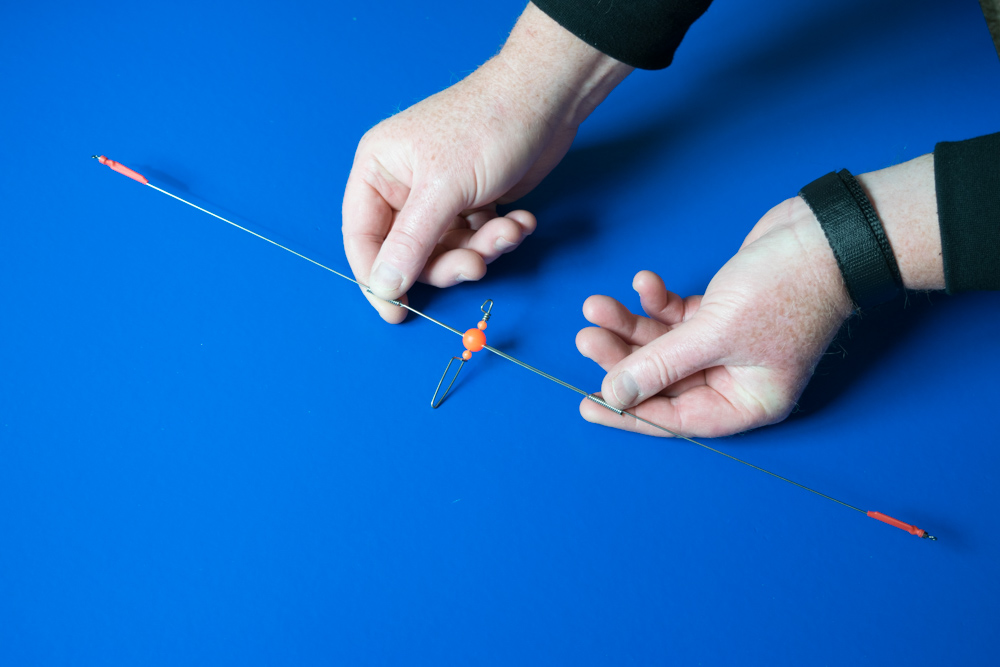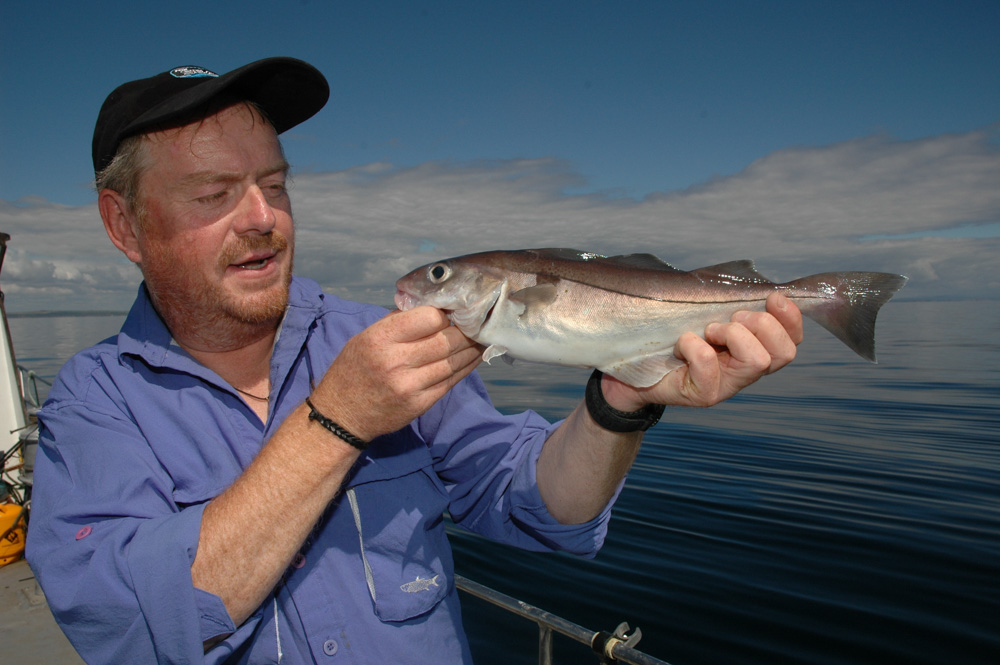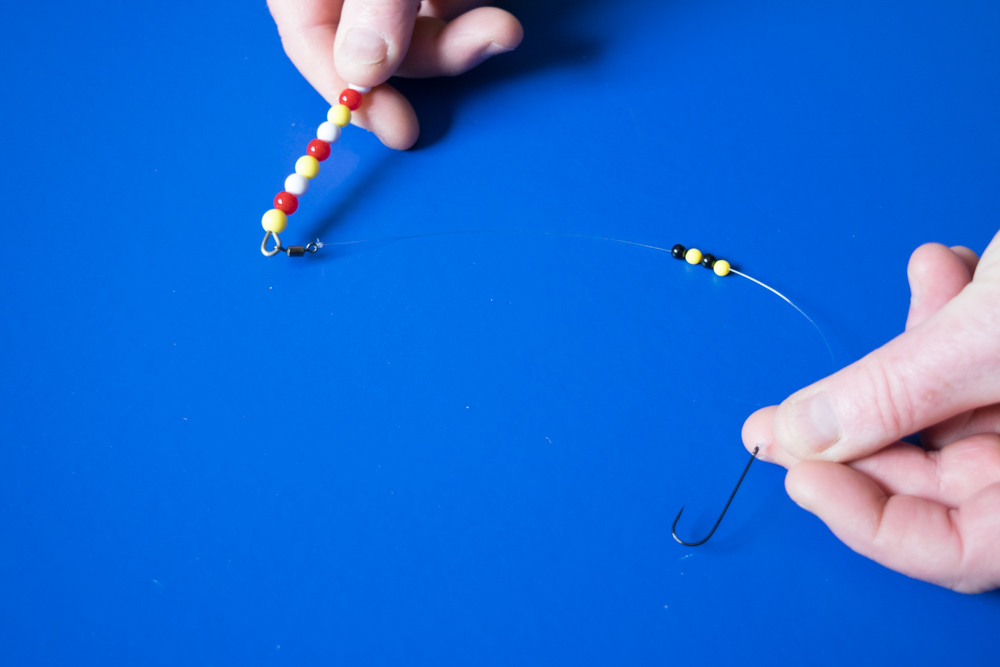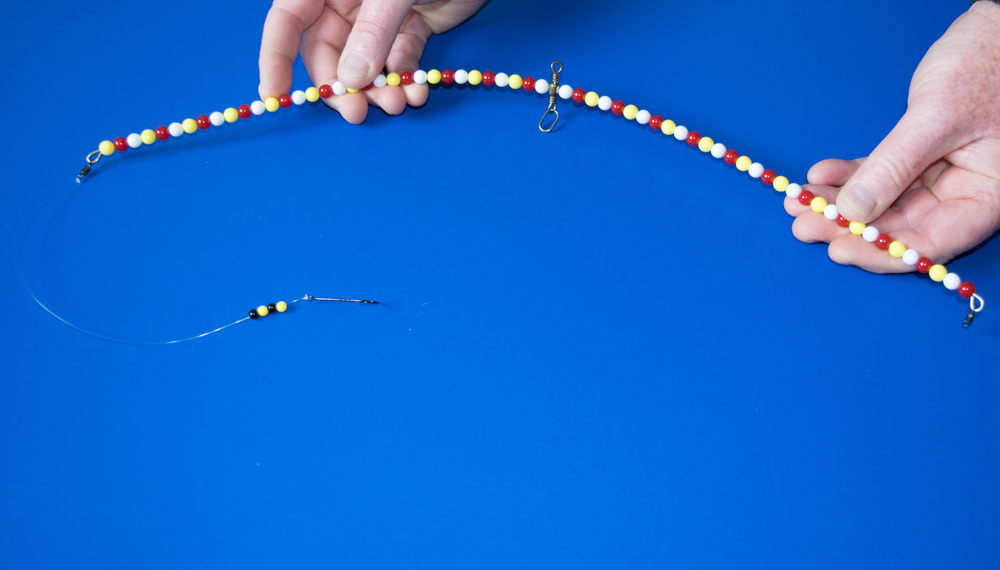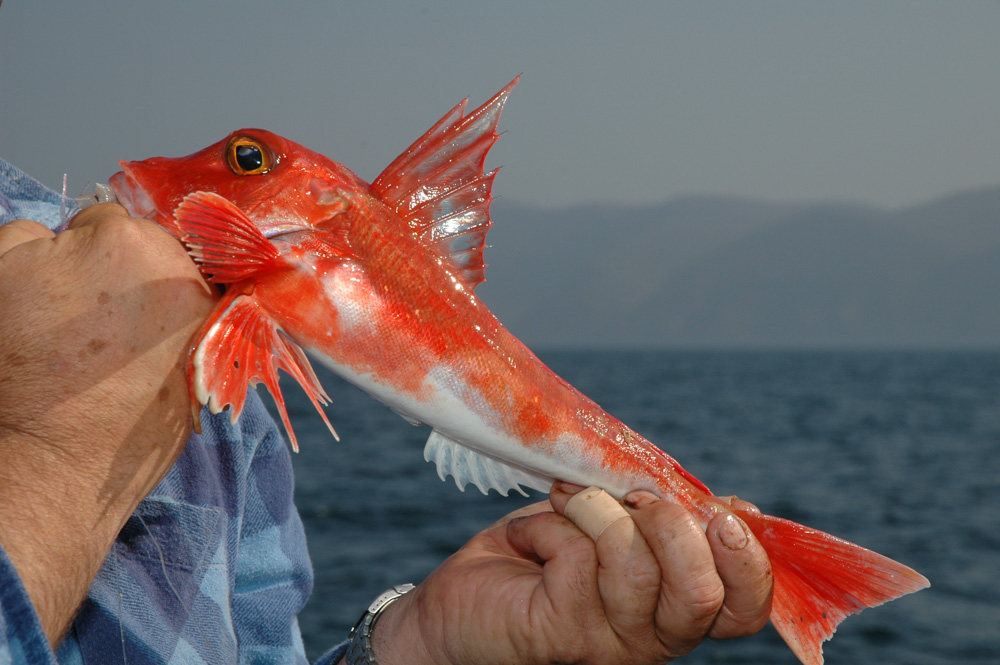Spreader bars are nothing new. They have been around for well over a century or more. However they are enjoying a major renaissance, especially over the past few years. The more experienced competition and freelance boat angler rediscovered how effective these rigs can be for all manner of bottom feeding fish when drift fishing, and in turn, more terminal tackle manufacturers are now including them in their product range for the general angler.
A spreader bar is simply a length of metal wire with a swivel or connector ring in the centre, with another connector ring or swivel clip to take the lead weight, and connector rings on each end to tie the hook traces to. These do, as the name suggests, spread two hook baits apart, but still fishes them in close proximity to each other, and without the danger of tangling due to the stiff wire.
The wire gauge and stiffness is important. Lighter gauge wire is okay for drift fishing over cleanish sand in relatively shallow water, say up to 60-feet, when targeting smaller species, such as whiting, dabs, gurnards and other small fish. As good as these spreader booms are, they are limited to shallowish water. If used in deeper water, then the wire will bend too much with fish on and tangles can occur. Tronix make a great lightweight boom that actually extends in length from a little over 13-inches to nearly 20-inches. This is ideal for smaller species, but being extendable is easily stored in a normal tackle box.
In deeper water the wire needs to be stiff enough to resist bending much when hooking bigger fish such as cod, ling, haddock, rays, and often double hook ups of fish. Some competition anglers use 3mm gauge wire to make their own booms to get the spreader bar stiff enough to target the bigger fish.
Spreader bars can be just as described, a simple length of wire with hook traces at each end. These work well for general fishing, but there are ways to make them much more effective. Before forming the connector eyes at the ends of the spreader bar, slide on 5mm or 8mm beads in alternate colours. Try black and yellow, red and white, green and black, or whatever else takes your fancy. These act as major attractors that will pull fish in to the baits. In very deep or slightly coloured water, use luminous beads for added attraction.
Alternatively just add the beads to the hook traces, which again work’s well for all bottom feeding species, especially flatfish, haddock, gurnards, codling and rays.
Talking hook traces, these need be no longer than 12-inches. Longer traces can be used, but actually give no benefit and are unnecessary when fishing a plain bait.
Anglers after ling with spreader bars also add a spoon or fluttering blade on to a heavier hook trace, with a short mono trace coming off the base of the spoon. Chrome blades are especially effective for ling, but also for cod, pollack, turbot, haddock, and in deeper northern waters, wolfish and torsk. Some anglers extend the hook trace length to 20-inches when fishing fluttering spoons for ling with a whole fillet of mackerel, and this does work well.
You can make your own bead spreader bars quite easily. With sharp cutters, cut the middle eye out of a big 3-way barrel swivel. Take 12 to 18-inches of stiff wire, a light wire coat-hanger being good or tensile 18-gauge wire, slide on a size 6 swivel, and form a round connector eye in one end with long nosed pliers locking the swivel inside the connector ring. Slide on a number of 5 or 8mm beads until half the wire is covered, slide the wire end through the hole in the 3-way swivel, then add more beads to the remaining half of the wire, and finally form a connector eye at the remaining end, again trapping a swivel inside. The pressure of the beads keeps the swivel central on the wire. Finally, to the lower eye of the swivel, add either a link clip or a split ring to take the lead weight.
The connector eye swivels are not really necessary, but help increase the rotation should you choose to use a small plastic attractor spoon, for instance, but also allows some hinging of the hook trace to add movement to the bait.
Spreader bars are easy to fish and little different than standard drift rigs in use. Simply tie your main line, or better still your shock leader, to the bars connector swivel, and once the hooks are baited, drop it down through the depth. The speed of drop can be quick as the spreader bar minimizes any chance of tangles. When you feel the weight hit bottom, keep the line tight for a few seconds to make sure the hook traces have fully lengthened out, then release a few yards of line, tighten up, and let the bar just slide over the seabed. Every 30-seconds or so, try resting the bar on the seabed, just for a few seconds. This allows any chasing fish to catch up and grab a bait.
You’ll also find that the weight of the bar and the centrally positioned lead weight helps keep the baits literally on the seabed all the time providing the weight is heavy enough to keep it there. This is the case regardless of how much line you have out, or if the angle the line enters the water is shallow or vertical. This is why spreader bars are so good in deep water, because the baits are fished on short hook traces and are always tight to the seabed and not prone to lifting up off the seabed as a longer trace can often do.
If you have never used a spreader bar before, then you are missing out in a major way, for they have a real place in every boat anglers rig collection and can often outperform a conventional mono trace rig for bottom feeders.
